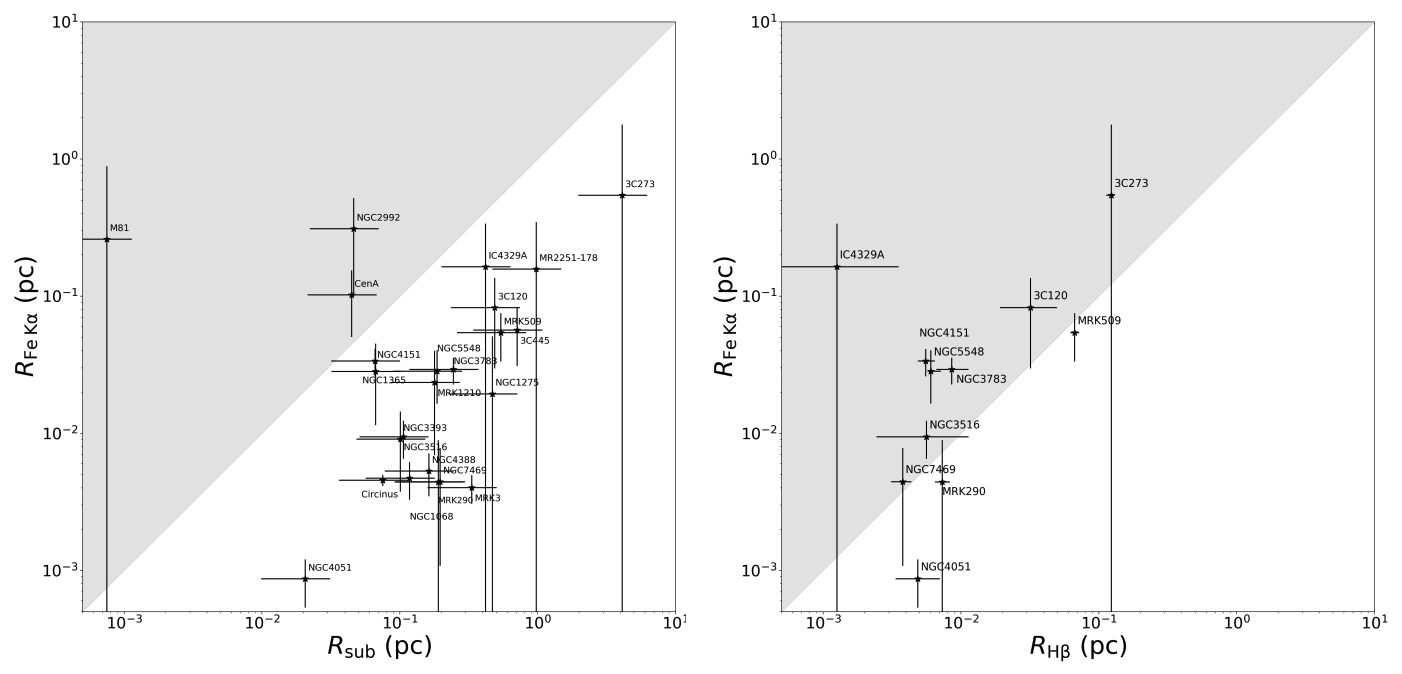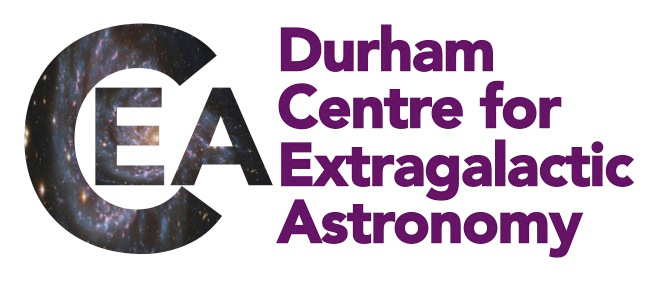CEA News, August 2022
Localizing narrow Fe Kα emission within bright AGN
The 6.4 keV Fe Kα emission line is a ubiquitous feature in X-ray spectra of active galactic nuclei (AGN), and its properties track the interaction between the variable primary X-ray continuum and the surrounding structure from which it arises. A new paper led by researchers at the CEA clarifies the nature and origin of the narrow Fe Kα emission using X-ray spectral, timing, and imaging constraints, plus possible correlations to AGN and host galaxy properties, for 38 bright nearby AGN (z < 0.5) from the Burst Alert Telescope AGN Spectroscopic Survey.
 Left: Fe Kα emitting radius (RFe Kα) versus dust sublimation radius (Rsub) in units of parsecs.
Right: Fe Kα emitting radius (RFe Kα) versus optical BLR radius (RHβ) in units of parsecs.
Left: Fe Kα emitting radius (RFe Kα) versus dust sublimation radius (Rsub) in units of parsecs.
Right: Fe Kα emitting radius (RFe Kα) versus optical BLR radius (RHβ) in units of parsecs.
The researches find that in 90% (21/24) of AGN with FWHM measurements, The Fe Kα emitting region size is smaller than the fiducial dust sublimation radius. From timing analysis, 37 and 18 AGN show significant continuum and Fe Kα variability, respectively. Despite a wide range of variability properties, the constraints on the Fe Kα photon reprocessor size independently confirm that The Fe Kα emitting region size is smaller than fiducial dust sublimation radius in 83% of AGN. Finally, the imaging analysis yields loose upper limits for all but two sources; notably, the Circinus Galaxy and NGC 1068 show significant but subdominant extended Fe Kα emission out to ∼100 and ∼800 pc, respectively.
Based on independent constraints, the authors conclude that the majority of the narrow Fe Kα emission in typical AGN predominantly arises from regions smaller than and presumably inside Rsub, and thus it is associated either with the outer broad line region or outer accretion disk. However, the large diversity of continuum and narrow Fe Kα variability properties are not easily accommodated by a universal scenario.

